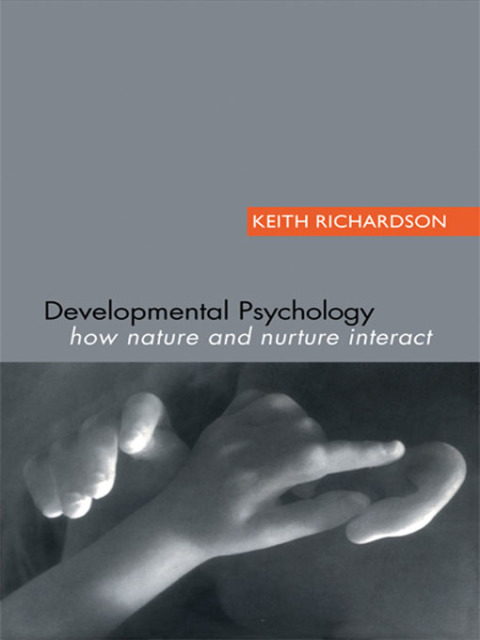Description
Efnisyfirlit
- Cover Page
- Half Title Page
- Title Page
- Copyright Page
- Contents
- List of Figures
- Preface
- Acknowledgements
- 1 Introduction: the traditional view and its alternative, a summary
- Is there a problem?
- Interactionism without interactions
- The dichotomies remain
- Resistance to change
- The traditional view of psychological development
- The ecological, dynamic systems view
- Organization of the book
- Discussion points
- 2 Darwinian dichotomies and their dissolution
- Natural selection
- Learning
- The dichotomies
- The nature/nurture dichotomy
- The organism/environment dichotomy
- The ontogenetic/phylogenetic dichotomy
- The biological/learning or social or cultural dichotomy
- The mind/body dichotomy
- Other means of change
- Whose side are you on?
- An interactionist alternative?
- Beginning the dissolution
- Preformationist forms of explanation
- The pernicious function of preformation
- ‘Genes’ or ‘environments’ as separate and sufficient causes?
- Regularity does not imply a regulator
- Phylogenetic or ontogenetic factors as separate and sufficient causes?
- Dissolving the organism/environment dichotomy
- Systems and relations
- Stable but changeable genes, stable but changeable environments
- The generation of generic forms: not a job for genetics
- Species-typical?
- Discussion points
- 3 Towards the alternative: ecological, dynamic systems
- Internal and external structure: equal partners
- Types of interaction and the integration of nature and nurture revisited
- Selection of cognition and action ignores the origin or location of factors
- What is selected in natural selection?
- Mixed paradigms: case studies in confusion
- One: orientation to faces
- Two: disembedded mind or embedded robot
- Discussion points
- 4 Dynamic systems theories
- Main properties of dynamic systems
- A different view of causality
- Focusing on human development
- Self-organization
- Collective variables (order parameters)
- Control parameters
- Control parameters and the production of levels of knowledge
- Types of attractors
- Changes at
- How is skilled action possible?
- Dynamic systems and development
- So what does ‘biological’ mean?
- Discussion points
- 5 The ecological perspective: Gibson’s legacy
- Gibson’s critique of traditional thinking
- Dynamic invariance
- Why invariance is critical
- The effective environment
- Concepts are criteria: an infinite regress
- Empirical evidence against the ‘cognitive’position
- The concept of affordance
- The continuity between perception, cognition and action
- Interactions between systems of different extensions of invariance
- How more generic systems interact with less
- Uniqueness in the face of invariance
- Different levels of complexity in invariances
- Information is not invariance
- Defining information
- Discussion points
- 6 The creation of knowledge
- Introduction
- Prenatal experience
- Response to stimulation
- Spontaneous activity
- Newborn ‘reflexes’?
- Summary of relevance of prenatal experience
- The powerful properties of ‘primal’ interactions
- Providing the conditions for learning
- Reducing the problem by reducing the solution space
- Coupling task demands to abilities: keeping problems simple
- Providing sensitivity to context
- Summary of hypotheses
- A note on direct perception
- Discussion points
- 7 A sample of the evidence: wise owls, accurate ants
- A glance at the animal world
- Bam owl prey location
- Navigation by dead reckoning and learning
- Invariances involved in migration
- Responses to looming
- How bats learn to avoid obstacles
- Pigeons, people and humming birds
- Vervet monkey communication
- Changing form of locomotion after metamorphosis
- Weaning in rats
- The role of experience in ‘primal’ interactions
- Duckling calls
- Seeing and hearing mother bird: the need for intermodal experience
- Coupled primal and plastic interactions in humans
- Reaching
- Looming
- Intermodality
- Neonatal imitation
- Imitation of sounds
- How imitation occurs
- Knowledge of other minds?
- Intermodality and self-recognition
- Smiling
- Turn-taking through burst-pause sucking
- Using line of gaze as information for joint attention to objects
- ‘Motherese’
- ‘Motherese’ in sign language
- Differential effects of different prosodic invariances
- How language emerges
- Adults as sensitively contingent
- Infant episodes
- Differentiated scaffolding
- Infant play
- Only humans can utilize the interactive affordances on offer
- The development of true language
- Primal perception of speech contrasts
- From sounds to words: relations between what can be directly perceived and what cannot
- Discussion points
- 8 The origins of knowledge
- The origins of knowledge: percepts or concepts?
- The primacy of concepts
- The dynamic systems response: stability versus sensitivity
- Varying assumptions
- An example from locomotion
- Forgetting context
- What is common and what is different in the views
- Uncoupling of representations and action: thinking as mental play
- Knowledge of the physical and social worlds: same or different?
- Two forms of invariance
- Scaffolding as social
- Looking back
- Discussion points
- General questions
- Glossary
- References
- Index






Reviews
There are no reviews yet.